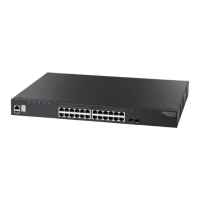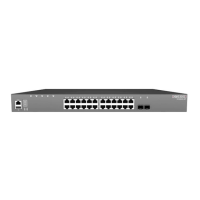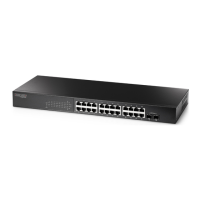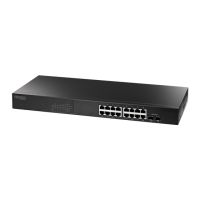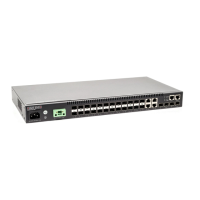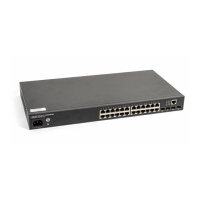Chapter 1
| Initial Switch Configuration
Automatic Installation of Operation Code and Configuration Settings
– 84 –
◆ During the automatic search and transfer process, the administrator cannot
transfer or update another operation code image, configuration file, public key,
or HTTPS certificate (i.e., no other concurrent file management operations are
possible).
◆ The upgrade operation code image is set as the startup image after it has been
successfully written to the file system.
◆ The switch will send an SNMP trap and make a log entry upon all upgrade
successes and failures.
◆ The switch will immediately restart after the upgrade file is successfully written
to the file system and set as the startup image.
To enable automatic upgrade, enter the following commands:
1. Specify the TFTP or FTP server to check for new operation code.
■
When specifying a TFTP server, the following syntax must be used, where
filedir indicates the path to the directory containing the new image:
tftp://192.168.0.1[/filedir]/
■
When specifying an FTP server, the following syntax must be used, where
filedir indicates the path to the directory containing the new image:
ftp://[username[:password@]]192.168.0.1[/filedir]/
If the user name is omitted, “anonymous” will be used for the connection. If
the password is omitted a null string (“”) will be used for the connection.
This shows how to specify a TFTP server where new code is stored.
Console(config)#upgrade opcode path tftp://192.168.0.1/sm24/
Console(config)#
This shows how to specify an FTP server where new code is stored.
Console(config)#upgrade opcode path ftp://admin:billy@192.168.0.1/sm24/
Console(config)#
2. Set the switch to automatically reboot and load the new code after the opcode
upgrade is completed.
Console(config)#upgrade opcode reload
Console(config)#
3. Set the switch to automatically upgrade the current operational code when a
new version is detected on the server. When the switch starts up and automatic
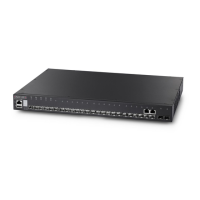
